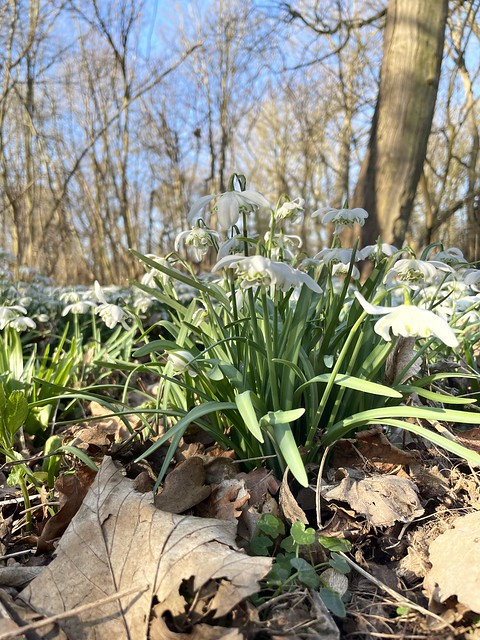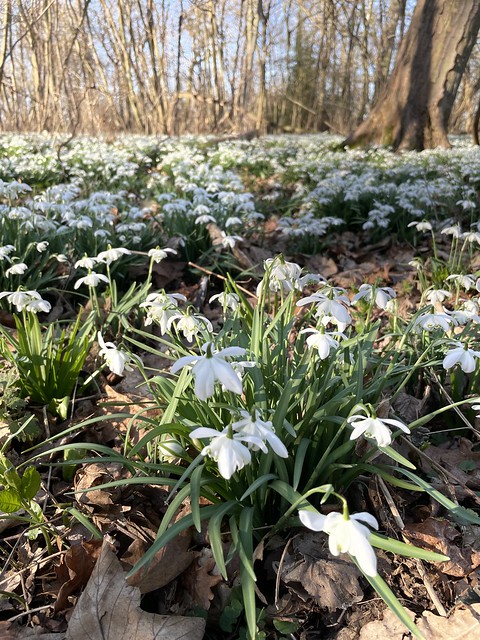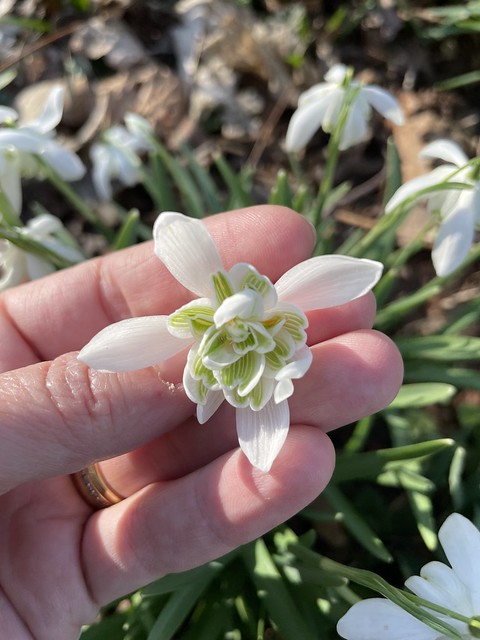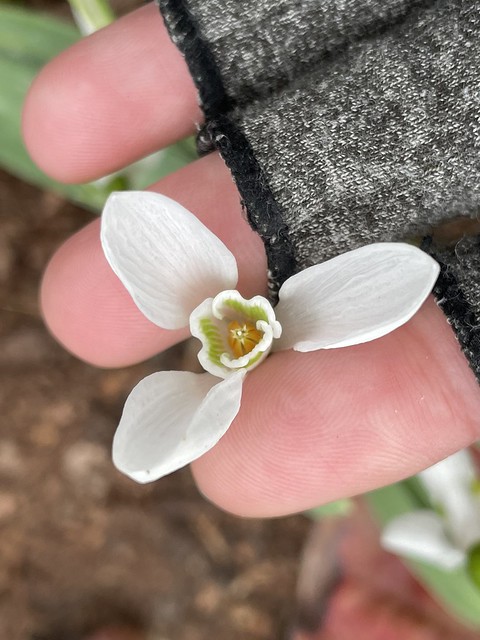Earlier this week I walked through this beautiful wood in Bedfordshire. It was a glorious sunny day – even a little warmth was in the air.

I don’t think that I’ve ever seen such an incredible display of snowdrops before. I’m a huge bluebell fan – and seeing snowdrops like this was a similar experience.

After some time I noticed something really weird. There were no bees! It was warm, there were flowers, but no bees… It was only when I flipped over one of the flowers that I realised why the bees were ignoring the supposedly plentiful forage.

All the flowers were “doubles” – meaning that each flower has more petals than the original “single” type. This makes the flower look more showy and arguably prettier, but it means that bees and other pollinators can’t easily access the pollen that they need at this time of the year. This stunning carpet of white is desert as far as bees are concerned.
Taking care to make good choices in the plants that we grow can have a big positive impact on bees. This is why we wrote our book – “80 Flowers for Bees” – it explains all this sort of thing.
Here are some pictures of a more traditional “single” snowdrop, so you can see the difference. The pollen is plentiful and easy for bees to access.


A few random snowdrop facts
- It is thought that snowdrops were introduced to the UK in the 16th century but weren’t seen growing wild until the end of the 18th century.
- There are more than 500 named varieties of snowdrops.
- Their name is thought to come from the pearl earrings that were popular in the 16th and 17th centuries.
- People who like snowdrops are known as Galanthophiles.
